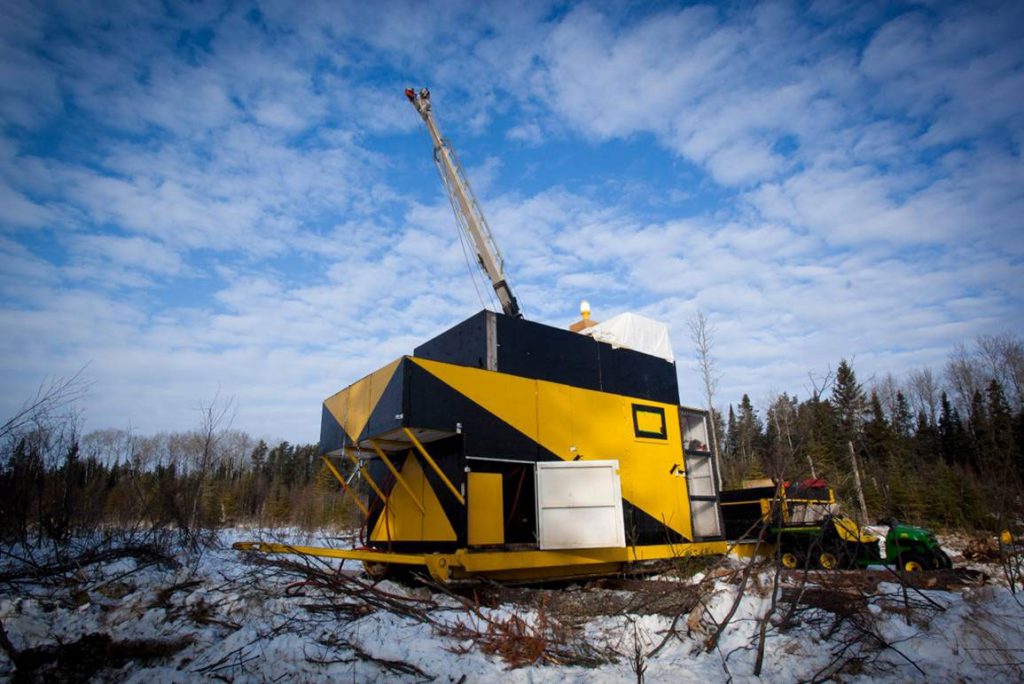Treasury Metals drills 0.7 g/t gold over 19.8 metres at Goliath, Ontario

Treasury Metals Inc. [TML-TSX; TSRMF-OTCQX; TRC1-FSE] reported additional results from the Far East target within the 100%-owned Goliath project which now extends the mineralization to approximately 600 metres on strike. Treasury’s Goliath gold complex, which includes the Goliath, Goldlund and Miller deposits, is located 20 km east of Dryden, northwestern Ontario.
The Far East mineralization is remarkably similar in appearance to the Goliath deposit, which has a strike length of 1.5 km and is characterized by foliated felsic volcanic rocks that are strongly altered with silica and sericite, in addition to sulphide mineralization. These features have all been identified in the Far East area and suggest a system of similar scale. As a reminder, the Goliath deposit has a 798,900 oz gold Measured and Indicated open pit mineral resource estimate at an average grade of 0.85 g/t and 325,100 oz Measured and Indicated underground mineral resource estimate averaging 3.72 g/t gold.
The results today wrap up the initial wide-spaced drill program designed to define the target for potential Goliath-style halo alteration and mineralization. The geology team is already planning a two-part follow-up program to the company’s 14-hole, 4,300-metre program completed in 2021/2022 that will first define the strike potential of the Far East and secondly infill the wide space drilling that has defined approximately 600 metres of mineralization at similar grades, intercept widths and geological features to the Goliath deposit.
Near-surface Goliath-style alteration and mineralization traced at Far East over approximately 600 metres on strike and open in all directions. Far East hole TL22-621 intersected 19.8 metres grading 0.70 g/t gold from 184.0 to 203.8 metres downhole, including 8.1 metres grading 1.21 g/t gold from 193.2 to 201.3 metres downhole.
Far East hole TL22-617 intersected 15.55 metres grading 0.48 g/t gold near surface from 55.0 to 70.55 metres downhole, including 1.0 metre grading 1.58 g/t gold from 57.0 to 58.0 metres downhole and 3.0 metres grading 1.35 g/t gold from 65.0 to 68.0 metres downhole.
| Jeremy Wyeth, president and CEO, commented: “These results are great for our plan to continue to grow the mineral resources on our Goliath gold complex. The Far East target is located close to existing roads and less than 10 kilometres from the proposed location for our processing plant. This early exploration (four holes in 2012, 14 holes in 2021/2022) has already defined greater than half a kilometre of prospective mineralization at grades above our Goliath open pit cut-off grade.” |
Maura Kolb, director of exploration, said: “Our exploration strategy has been to define targets on our vast property, then test and rank them. The Far East target ranked high on our list in 2021 due to its similarities with the Goliath deposit. These new results have made it clear to me that we have found a target that is ready for further exploration. We will continue to do our initial testing of other identified early-stage targets because it is important for us to have a robust target pipeline. It is my goal to move one of these targets into resource definition by the end of 2022.”
Exploration in 2022 will continue to be focused on testing new exploration targets. Fieldwork has begun this month on newly identified targets, beginning with South Ridge which is located less than a kilometre from the Goliath deposit. The company will resume diamond drilling in the coming weeks with one drill rig and will ramp up to two drill rigs in the summer. The company continues to work on the prefeasibility study coming out this fall.
The deposits benefit substantially from excellent access to the Trans-Canada Highway, related power and rail infrastructure; and close proximity to several communities, including Dryden.
